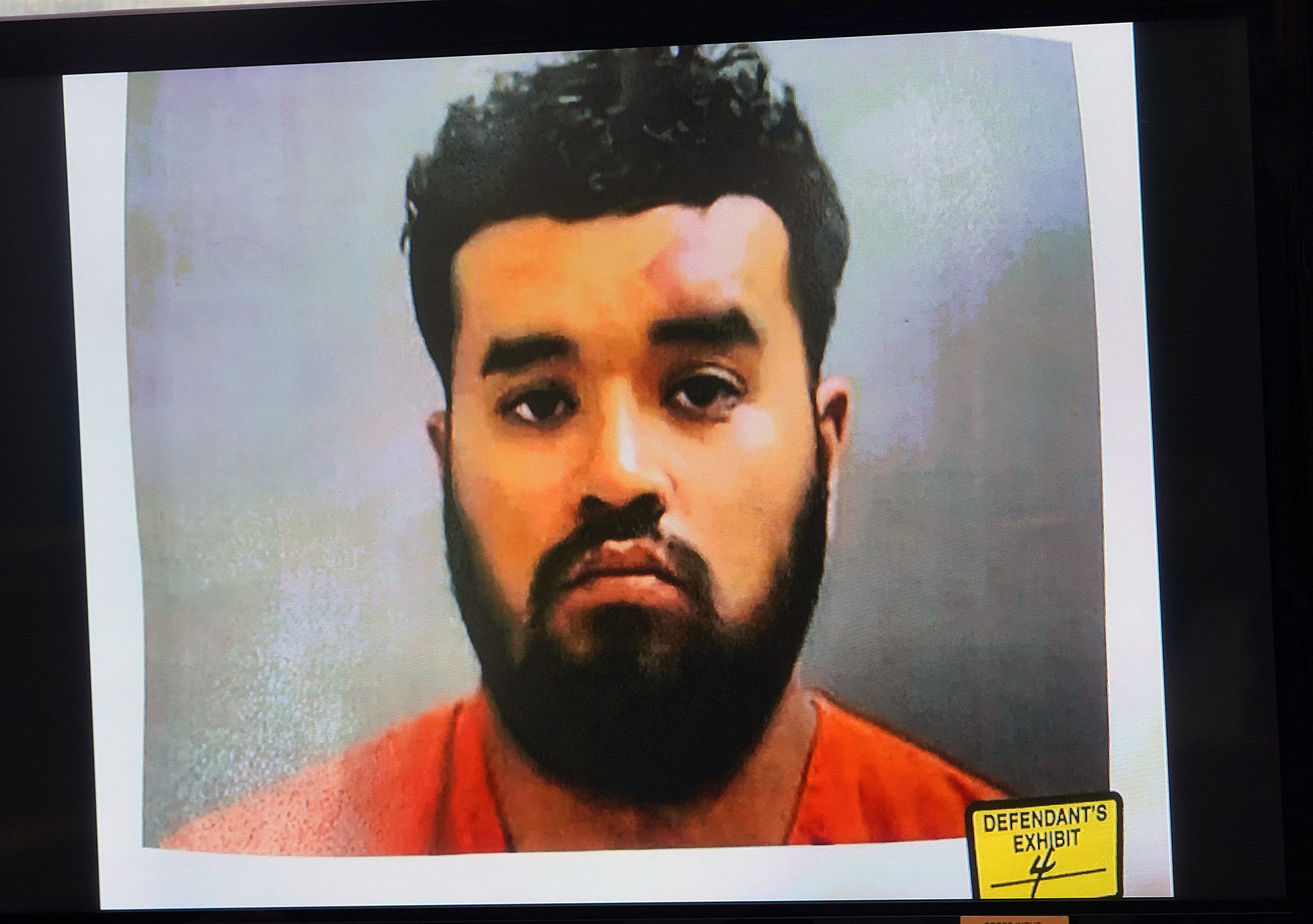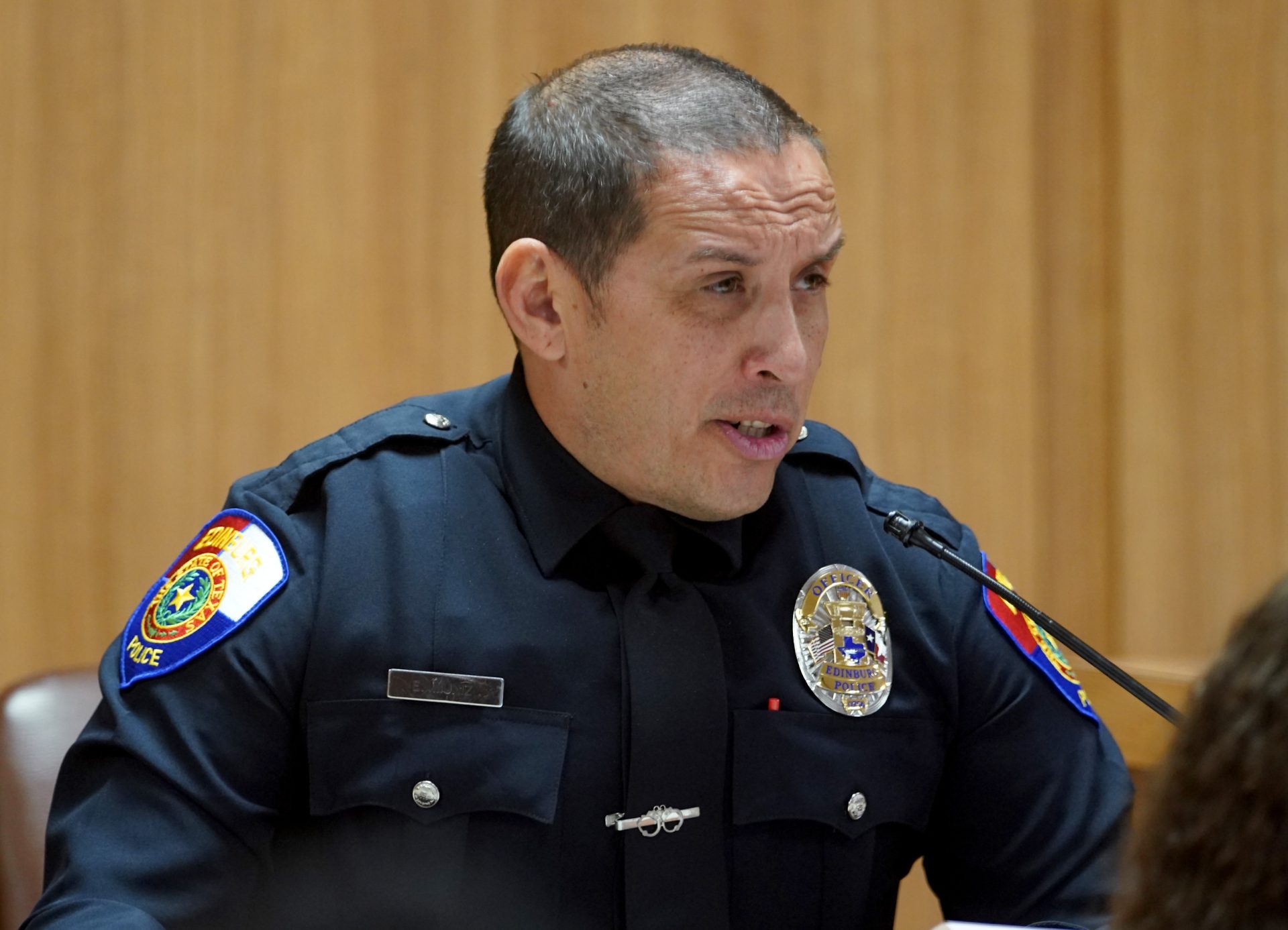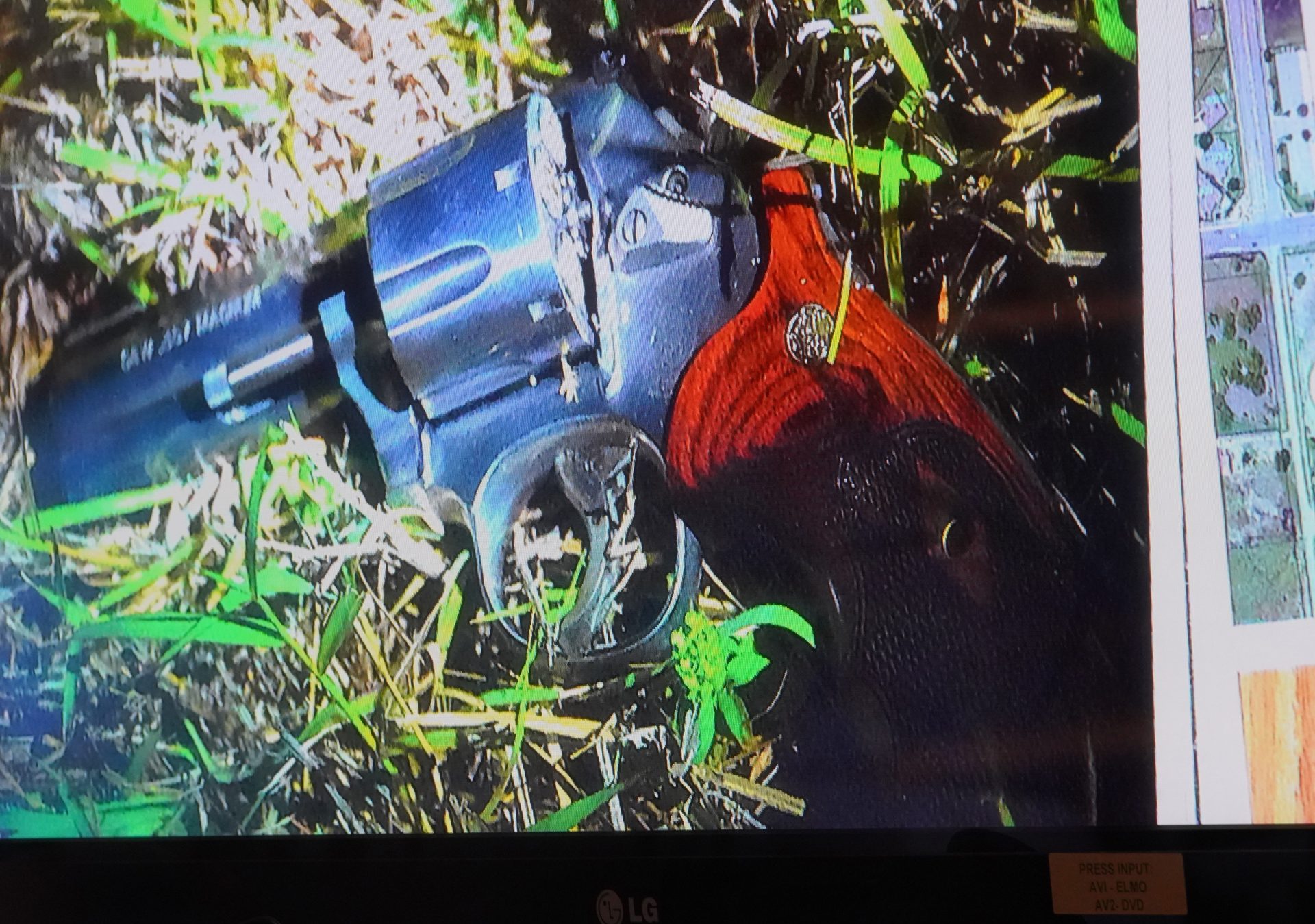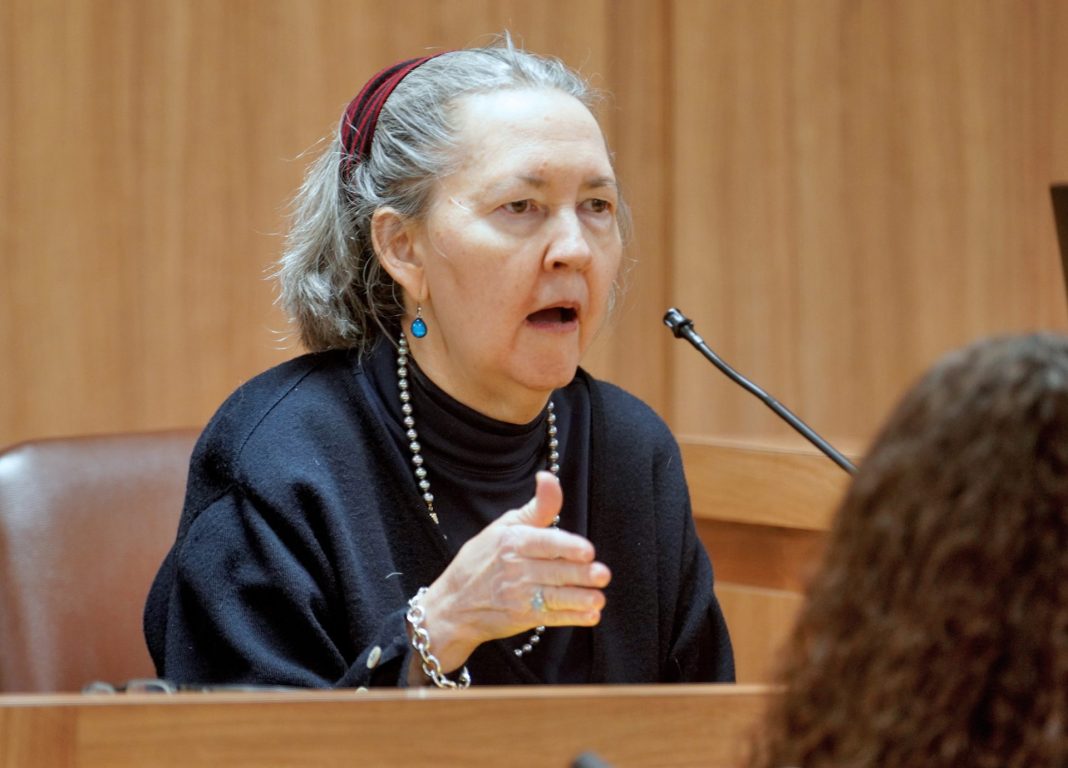|
Only have a minute? Listen instead
Getting your Trinity Audio player ready...
|
EDINBURG — The eighth day of the death penalty trial for Victor Alejandro Godinez continued Thursday afternoon with testimony from the medical examiner who performed the autopsy on Texas Department of Public Safety Trooper Moises Sanchez.
Godinez is facing one count of capital murder of a peace officer for the April 6, 2019 shooting of Sanchez, who died months later in Houston following a surgery. He also faces two counts of attempted capital murder of a police officer for shooting at two Edinburg Police Department investigators later on that same night.
If convicted, prosecutors will seek the death penalty.
Prosecutors called Dr. Lucile Tennant, the assistant medical examiner for the Harris County Institute of Forensic Sciences, to the stand Thursday afternoon. Tennant performed the autopsy on Sanchez on Aug. 29, 2019, five days after he died on Aug. 24 of that year.

“This man had clearly had extensive medical intervention,” Tennant said as she recalled the details from Sanchez’s autopsy.
The prosecution presented photos taken during the autopsy with Tennant providing explanations to her findings.
The first photo showed Sanchez’s left arm with hospital wristbands still on his wrist.
Another photo showed the top left side of Sanchez’s head with scarring from a surgery and sutures holding the skin in place, which Tennant said were signs of a craniectomy. Another photo showed the right side of Sanchez’s head with a tube entering behind his ear.
Sanchez’s exposed skull was also seen with a large hole. Tennant pointed out that part of the skull was removed during a surgery following the shooting. A closer look revealed a small semi-circle near a fracture, which Tennant explained was the original gunshot wound.
A photograph of Sanchez’s right upper torso showed a gunshot wound to his shoulder. Other photos, including X-rays, showed where bullet fragments had been found in his chest and intestines. Those fragments, as well as a “projectile jacket” were removed during the autopsy.
Just before the prosecution passed the witness, Tennant said that she believed that Sanchez died as a result from complications from the gunshot wounds to his head and shoulder.

Godinez’s attorneys began their questioning by asking Tennant about her role in Sanchez’s autopsy. She explained that her expertise deals primarily with postmortem, emphasizing that she is not a clinician. However, she explained that it is typical for medical examiners to review records before coming to a conclusion for the cause of death.
She said that she reviewed the majority of Sanchez’s medical records from every hospital and rehabilitation facility where he’d been a patient.
The defense tried to argue that Sanchez’s death was the result of complications after his final surgery. Tennant was asked if she knew whether Sanchez and his family were made aware of the risks and benefits of the procedure.
When Tennant struggled to recall those exact details, the defense provided her with a copy of the admission report to refresh her memory. The move prompted a lengthy break in the testimony as attorneys argued whether she should be allowed to read from a report that she did not write and was not admitted as evidence.
After a long break, the judge determined that since she had reviewed the particular report during the course of the autopsy, she would be allowed to view it before answering the defense’s questions.
The defense asked about Sanchez’s condition throughout the course of his hospitalizations following the shooting. Tennant said that her recollection of his “hospital course” was that his condition varied throughout, going from stabilized to destabilized.

Tennant was asked about whether his last surgery was deemed successful. They argued that Sanchez’s family had been advised following the surgery that the procedure was successful, and that his health faded after an oxygen tube was removed shortly after.
The witness was passed back to the prosecution, who asked Tennant if Sanchez would’ve needed any of the procedures had he not been shot. She said that he would not, and was subsequently excused.
On Friday morning, Dr. Glenn Douglas Sandberg, a pathologist, echoed Tennant’s findings that Sanchez’s death was a direct result of being shot by Godinez.
“What caused the chain of events was the gunshot,” Sandberg said.
Sandberg also testified regarding the condition of Sanchez’s brain when he examined it following his autopsy.
Sandberg explained that he’s often referred to for consultation for brain abnormalities during autopsies.
In this instance, Sandberg said that Sanchez’s brain was already experiencing necrosis despite being preserved.

“The brain was soft and fell apart easily,” Sandberg said. “The brain itself was dead tissue.”
Normally when a brain is preserved for examination, it’s still intact due to the liquid used and “frozen in time” as Sandberg explained, but Sanchez’s brain was different.
Sandberg said Sanchez’s brain’s left hemisphere “was basically deteriorating” and the right hemisphere was beginning to deteriorate as well.
“It was initiated with a bullet through the brain,” Sandberg said.
He added that he couldn’t tell where the hole caused by the bullet was due to the necrosis.
In addition, Sandberg said he found a metal fragment inside the brain during his examination which led him to believe the bullet nearly traveled the length of the brain.
At the end of his testimony, Sandberg said that he found the brain stem, of which controls all the vital functions of a human body, to also be necrotic.
Editor’s note: This story was updated to include new information from the ninth day of trial.
PREVIOUS COVERAGE:
Defense questions investigators about cognitive status of trooper’s accused killer
Edinburg man accused of DPS trooper’s shooting legally bought alleged murder weapon





